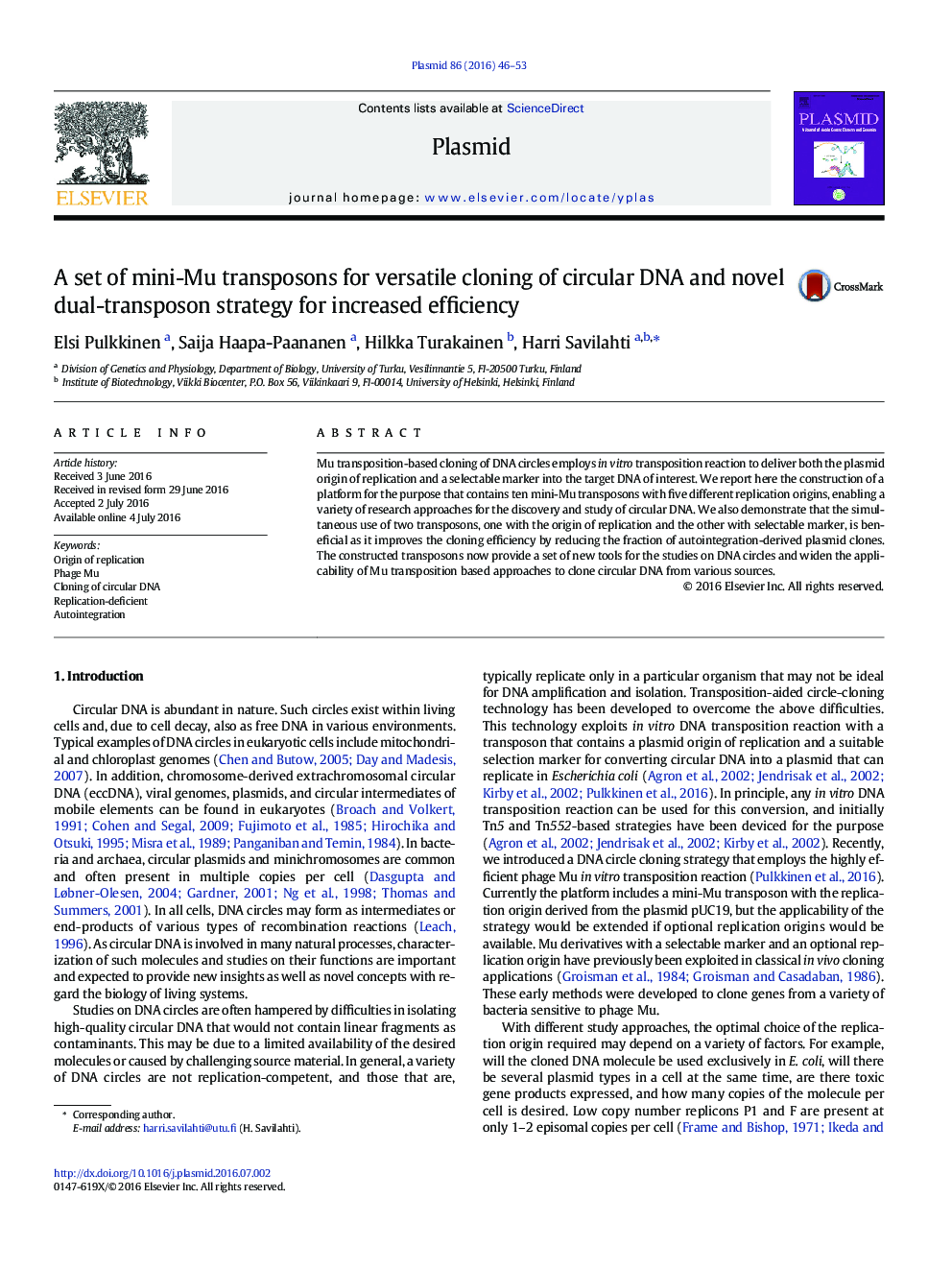| Article ID | Journal | Published Year | Pages | File Type |
|---|---|---|---|---|
| 2824034 | Plasmid | 2016 | 8 Pages |
•In vitro transposition reaction efficiently converts circular DNA to replicating plasmids•A platform of ten transposons established•Five different replication origins allow versatility•A dual-transposon cloning strategy improves efficiency•The methodology widens the applicability of Mu transposition based approaches to clone circular DNA from various sources
Mu transposition-based cloning of DNA circles employs in vitro transposition reaction to deliver both the plasmid origin of replication and a selectable marker into the target DNA of interest. We report here the construction of a platform for the purpose that contains ten mini-Mu transposons with five different replication origins, enabling a variety of research approaches for the discovery and study of circular DNA. We also demonstrate that the simultaneous use of two transposons, one with the origin of replication and the other with selectable marker, is beneficial as it improves the cloning efficiency by reducing the fraction of autointegration-derived plasmid clones. The constructed transposons now provide a set of new tools for the studies on DNA circles and widen the applicability of Mu transposition based approaches to clone circular DNA from various sources.
